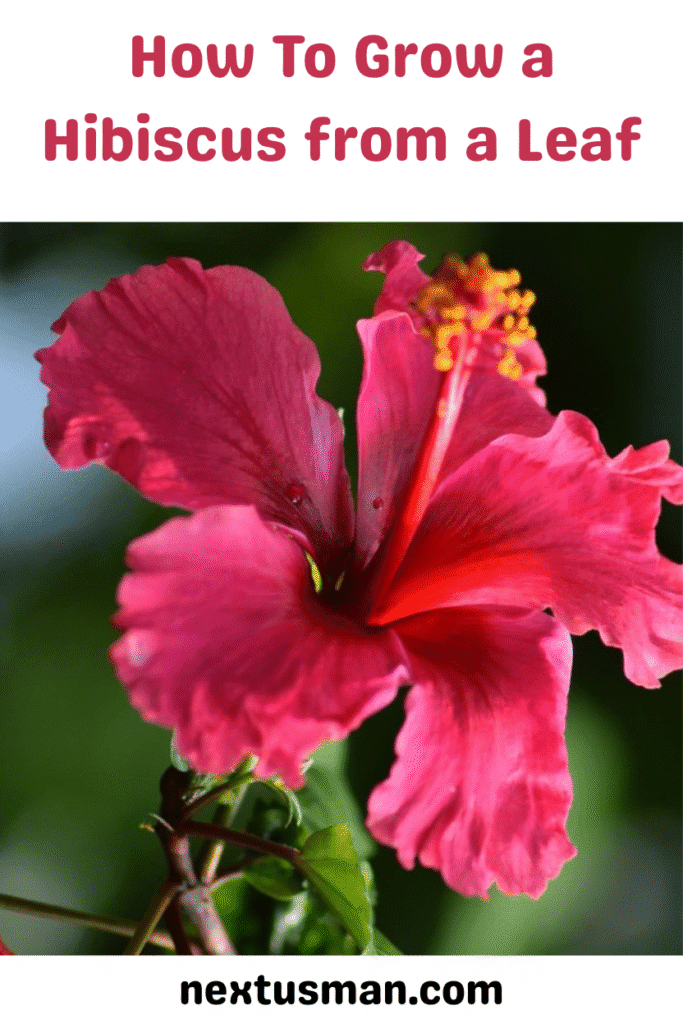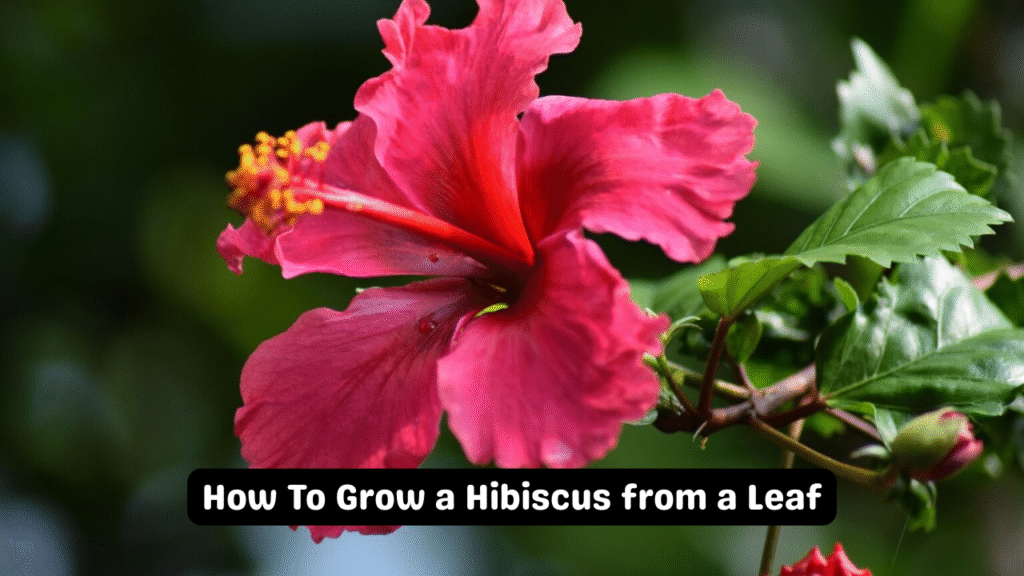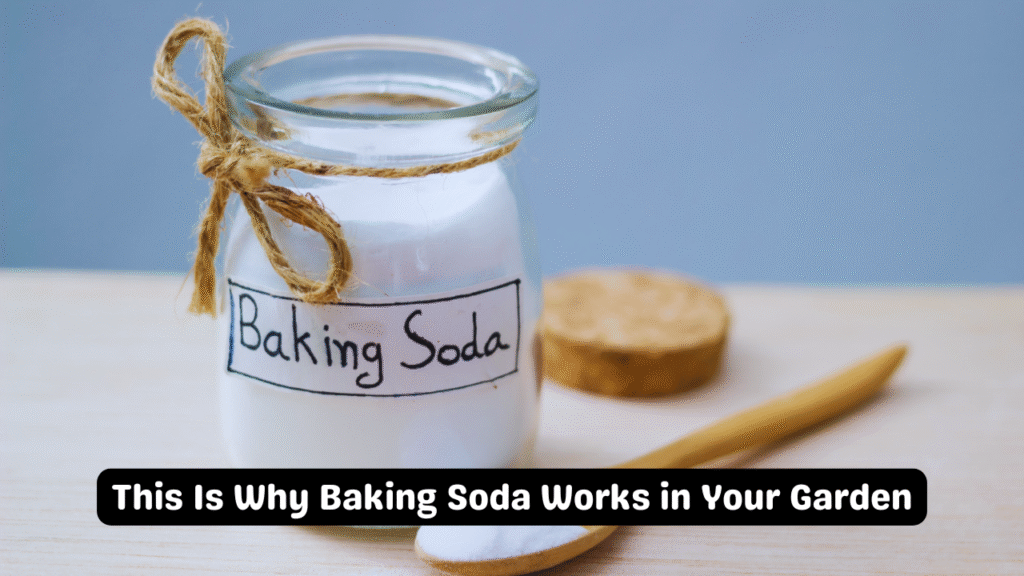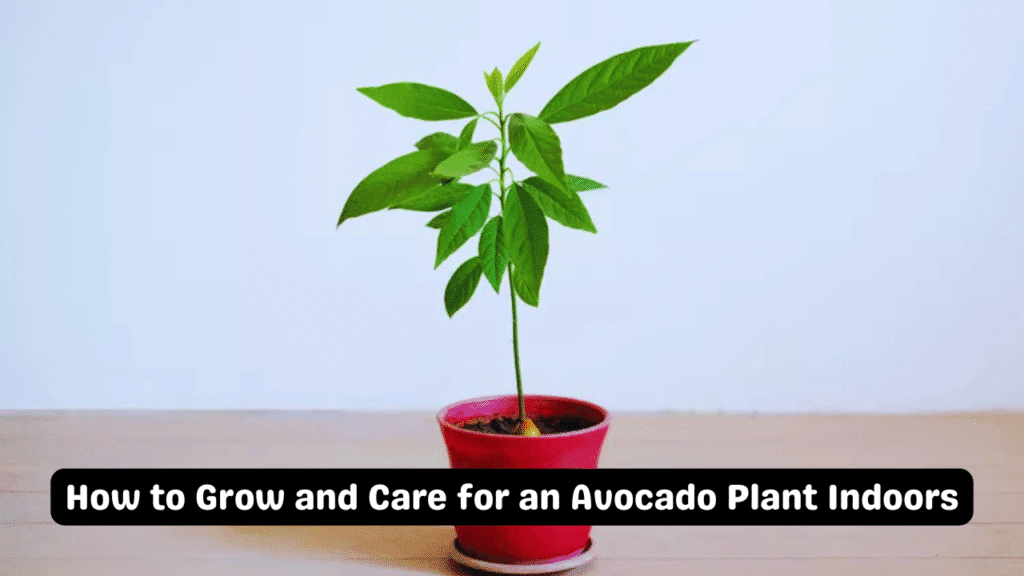Did you know that a simple hibiscus leaf could hold the potential to grow into a full, flowering plant? While leaves are often overlooked, they can play a vital role in plant propagation. In this guide, we’ll show you how to grow a hibiscus from a leaf — step-by-step — and bring vibrant color to your garden using just one piece of the plant.
🌺 What is a Hibiscus?
Hibiscus is a genus of flowering plants in the Malvaceae family, known for its large, colorful blooms and tropical flair. These stunning flowers attract bees, butterflies, and other pollinators, and are often used in herbal teas, skincare, and landscaping.
- Leaves: Simple, alternate, often lobed, and slightly leathery.
- Flowers: Bright, ruffled, and ranging from deep red to pink, orange, yellow, and even white.
- Growth habit: Can be grown as shrubs, small trees, or potted plants.
🌿 Can You Grow Hibiscus from a Leaf?
While hibiscus is traditionally propagated through cuttings from stems, it’s possible to encourage growth from a leaf cutting — especially when the leaf is attached to a short stem node (petiole). This method is experimental but fun for gardeners who enjoy trying unique propagation techniques.
🪴 Step-by-Step Guide: Growing Hibiscus from a Leaf
1. Choose a Healthy Leaf and Stem Node
Select a healthy hibiscus leaf attached to a small portion of stem (petiole). The node is essential, as it contains the tissue capable of developing roots and new shoots.
2. Prepare the Growing Medium
Use a deep, well-draining pot or planter. Fill it halfway with a mix of:
- Potting soil
- Perlite or sand (to improve drainage)
- Optional: Compost for added nutrients
3. Plant the Leaf
Insert the leaf node into the soil at a slight angle. Make sure the leaf remains above the soil surface while the stem section is gently buried. Water lightly to settle the soil.
4. Provide the Right Environment
- Light: Place the container in a spot with bright, indirect sunlight.
- Humidity: Cover the container loosely with a plastic bag to maintain humidity (optional).
- Temperature: Keep it in a warm area — ideally above 65°F (18°C).
5. Water and Monitor
Water when the top inch of soil feels dry. Avoid overwatering to prevent rot. After 3–6 weeks, roots may begin to form if conditions are favorable.
🌸 Caring for Your Young Hibiscus Plant
Once your hibiscus cutting shows signs of growth, follow these tips:
- Sunlight: Move it into stronger light as it matures, especially in spring and summer.
- Feeding: Use a balanced liquid fertilizer every two weeks during the growing season.
- Protection: Shield from frost in colder months by moving it indoors or using mulch and covers outdoors.
- Pest Control: Keep an eye out for aphids or whiteflies and treat promptly with neem oil or insecticidal soap.
✂️ Additional Tips
- Prune dead or damaged leaves and stems to encourage healthier growth.
- Protect young plants from deer and critters by using garden twine or fencing.
- Use mulch to maintain soil moisture and regulate temperature.
🌿 Conclusion

Growing a hibiscus from a leaf is a rewarding gardening experiment that may surprise you with its results. With the right conditions and care, even a simple leaf can become a beautiful, flowering plant. Whether you’re a beginner or a seasoned gardener, give this method a try and bring a touch of tropical beauty to your garden!




